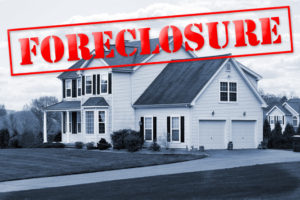In Alleging Unfair Mortgage Practices, Can a Pro Se Plaintiff Survive a Motion to Dismiss without Raising a Per Se Violation?
This post revisits litigation over the federal Home Affordable Mortgage Program, known as HAMP.
Several years ago, in a pair of posts, we studied the application of N.C. Gen. Stat. § 75-1.1 to a lender’s conduct under this mortgage program. HAMP doesn’t provide a private right of action, so borrowers needed to turn to another source of law to seek relief for HAMP violations.
 An early decision on section 75-1.1 and HAMP, called Campbell v. CitiMortgage, Inc., reached a significant holding. The Campbell court concluded that, even though HAMP doesn’t include a private right of action, the violation of a statute designed to protect the public—like HAMP—can still be an unfair or deceptive trade practice.
An early decision on section 75-1.1 and HAMP, called Campbell v. CitiMortgage, Inc., reached a significant holding. The Campbell court concluded that, even though HAMP doesn’t include a private right of action, the violation of a statute designed to protect the public—like HAMP—can still be an unfair or deceptive trade practice.
The homeowners in Campbell complained that their lender foreclosed on their home during negotiations to modify their mortgage under HAMP. The homeowners even attached a letter from the lender that advised them no foreclosure sale would occur pending a determination on their HAMP application. The Campbell court held this conduct could plausibly state an unfair or deceptive trade practices.
This background brings us to the subject of today’s post: a recent decision by the U.S. District Court for the Middle District of North Carolina on a lender’s HAMP-related conduct.
The Latest Word: Salami v. JPMorgan Chase Bank
The plaintiff in the case, styled Salami v. JPMorgan Chase Bank, alleged that his lender approved his request for a HAMP modification but then reversed that decision on questionable grounds.
The bank moved to dismiss, but United States Magistrate Judge Joe L. Webster held that Dr. Salami’s allegations, like the allegations in Campbell, plausibly stated a violation of section 75-1.1.
First, citing Campbell, Judge Webster explained that “allegations that a defendant violated HAMP by using (or in circumstances involving) ‘unfair and deceptive trade practices’ can serve as the basis for a UDTPA claim.” The alleged HAMP violations did not automatically create a violation of section 75-1.1, but they could support a section 75-1.1 claim.
Judge Webster then turned to the specific facts alleged in the complaint. According to Dr. Salami:
- Chase approved his loan modification agreement on December 19, 2015;
- Chase sent that agreement to the wrong address;
- Chase promised to send the agreement to the correct address;
- Chase changed its decision on his application;
- Chase told Dr. Salami he had to re-submit his application along with 80 pages of supporting documentation; and
- Chase eventually denied multiple applications, citing reasons that Dr. Salami called “fabricated.”
Judge Webster concluded that these were plausibly unfair or deceptive: “[f]or a servicer to inform an alleged borrower that he is approved for a modified loan, to change that decision and tell him to apply again, to repeatedly deny that application for reasons that the borrower contends are untrue, and to respond to multiple submissions of long applications and supporting documentation with a short and vague form letter may be unfair or deceptive.”
No Substantial Aggravating Circumstances Required
But what about the fact that a mortgage is a contract? Wouldn’t the absence of “substantial aggravating circumstances” be required to prove a 75-1.1 claim that concerns a contract?
Not here, Judge Webster explained. Dr. Salami’s complaint concerned “communications about the mortgage” that were extra-contractual. Because he didn’t allege a contract breach, Dr. Salami didn’t need to plead substantial aggravating circumstances. For the same reason, his section 75-1.1 claim survived the bank’s motion to dismiss even though his claim for breach of contract did not.
What Does The Future Hold?
Chase has filed objections to Judge Webster’s decision, so that decision might not be the last word in that matter.
But aside from the Salami case, the intersection of HAMP and section 75-1.1 may be closing. The deadline to submit applications under HAMP was December 30, 2016. In view of the four-year limitations period in section 75-16.2, these claims will probably dry up soon.
Even if that happens, we surely haven’t seen the last time that a plaintiff will look to another source of law as the basis for a section 75-1.1 claim.
Author: Jamie Weiss


